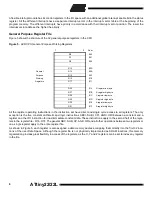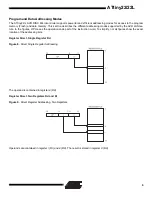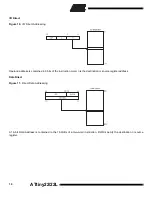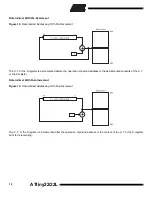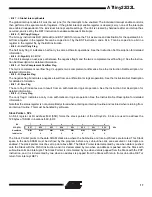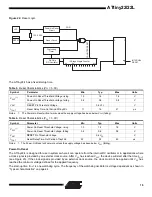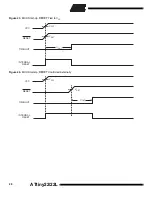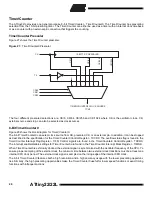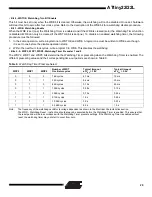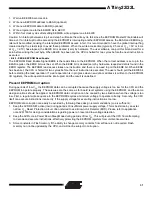
17
ATtiny22/22L
•
Bit 7 - I: Global Interrupt Enable
The global interrupt enable bit must be set (one) for the interrupts to be enabled. The individual interrupt enable control is
then performed in separate control registers. If the global interrupt enable register is cleared (zero), none of the interrupts
are enabled independent of the individual interrupt enable settings. The I-bit is cleared by hardware after an interrupt has
occurred, and is set by the RETI instruction to enable subsequent interrupts.
•
Bit 6 - T: Bit Copy Storage
The bit copy instructions BLD (Bit LoaD) and BST (Bit STore) use the T bit as source and destination for the operated bit. A
bit from a register in the register file can be copied into T by the BST instruction, and a bit in T can be copied into a bit in a
register in the register file by the BLD instruction.
•
Bit 5 - H: Half Carry Flag
The half carry flag H indicates a half carry in some arithmetic operations. See the Instruction Set Description for detailed
information.
•
Bit 4 - S: Sign Bit, S = N
⊕
V
The S-bit is always an exclusive or between the negative flag N and the two’s complement overflow flag V. See the Instruc-
tion Set Description for detailed information.
•
Bit 3 - V: Two’s Complement Overflow Flag
The two’s complement overflow flag V supports two’s complement arithmetics. See the Instruction Set Description for
detailed information.
•
Bit 2 - N: Negative Flag
The negative flag N indicates a negative result from an arithmetical or logical operation. See the Instruction Set Description
for detailed information.
•
Bit 1 - Z: Zero Flag
The zero flag Z indicates a zero result from an arithmetical or logical operation. See the Instruction Set Description for
detailed information.
•
Bit 0 - C: Carry Flag
The carry flag C indicates a carry in an arithmetical or logical operation. See the Instruction Set Description for detailed
information.
Note that the status register is not automatically stored when entering an interrupt routine and restored when returning from
an interrupt routine. This must be handled by software.
Stack Pointer - SPL
An 8-bit register at I/O address $3D ($5D) forms the stack pointer of the ATtiny22/L. 8 bits are used to address the
128 bytes of SRAM in locations $60 - $DF.
The Stack Pointer points to the data SRAM stack area where the Subroutine and Interrupt Stacks are located. This Stack
space in the data SRAM must be defined by the program before any subroutine calls are executed or interrupts are
enabled. The stack pointer must be set to point above $60. The Stack Pointer is decremented by one when data is pushed
onto the Stack with the PUSH instruction, and it is decremented by two when an address is pushed onto the Stack with
subroutine calls and interrupts. The Stack Pointer is incremented by one when data is popped from the Stack with the POP
instruction, and it is incremented by two when an address is popped from the Stack with return from subroutine RET or
return from interrupt RETI.
Bit
7
6
5
4
3
2
1
0
$3D ($5D)
SP7
SP6
SP5
SP4
SP3
SP2
SP1
SP0
SPL
Read/Write
R/W
R/W
R/W
R/W
R/W
R/W
R/W
R/W
Initial value
0
0
0
0
0
0
0
0




